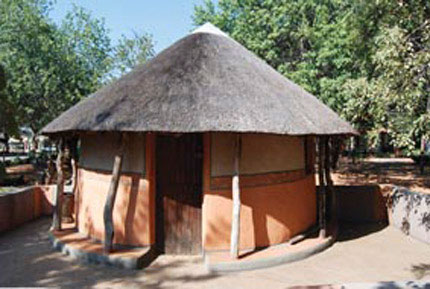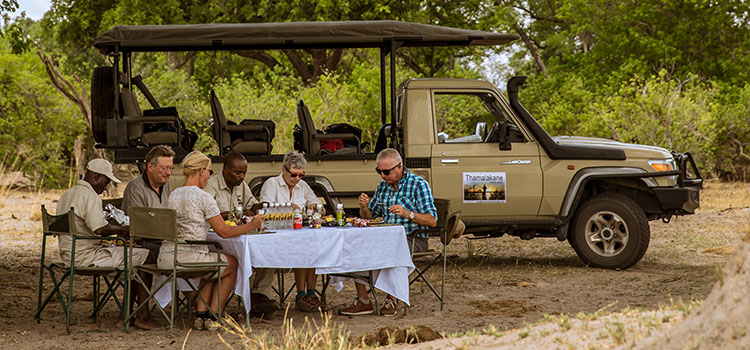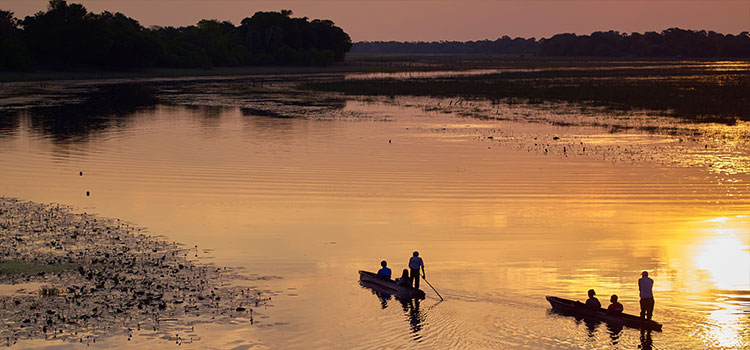


Visiting Gaborone today, it is perhaps difficult to comprehend that, within living memory, most Batswana lived in rather rudimentary dwellings a world away from the glass-fronted office towers and palatial ranch-style properties that now grace the city centre and surrounding suburbs.
Local Materials :
Traditionally, houses were made from readily available local materials such as mud, dung and wood, while the roofs were thatched. Most of these houses were built by the people who lived in them. The houses were round in shape and often included a lolwapa or courtyard. Dwellings were often constructed in a group so that members of the same family could live in close proximity.
Almost all of this type of makeshift dwelling has disappeared from Gaborone and many other towns. But some good examples of traditional building methods and non-domestic architecture can still be found. One of these is the old fort and prison building in Gaborone Village.
More recently, and with financial assistance from the government, basic domestic dwellings have tended to be square in shape. They have metal instead of thatched roofs and the walls are made from bricks and cement. Furthermore, these houses feature individual rooms such as a kitchen and bedrooms and, in general, the builders have discarded the old-style courtyard in favour of open space around the dwelling and between each house and its neighbour.
At the same time, it is still common for many Batswana to own a house in town while retaining their agricultural and rural links with their home village. This link may include agricultural land as well as a dwelling. Many also own a cattle-post, where livestock are kept. This cattle-post may include some basic-looking buildings and/or a shelter for the herdsman.
In villages, the chief is all-powerful. He or she presides over a central court and public forum known as a kgotla – a meeting place, village council and law court all rolled into one, where community decisions are arrived at by consensus. Despite Botswana’s rush to modernise, the kgotla remains a feature of rural life and a reminder, if one were needed, of the profoundly democratic traditions of this nation.
Visiting Gaborone today, it is perhaps difficult to comprehend that, within living memory, most Batswana lived in rather rudimentary dwellings a world away from the glass-fronted office towers and palatial ranch-style properties that now grace the city centre and surrounding suburbs.
Local Materials :
Traditionally, houses were made from readily available local materials such as mud, dung and wood, while the roofs were thatched. Most of these houses were built by the people who lived in them. The houses were round in shape and often included a lolwapa or courtyard. Dwellings were often constructed in a group so that members of the same family could live in close proximity.
Almost all of this type of makeshift dwelling has disappeared from Gaborone and many other towns. But some good examples of traditional building methods and non-domestic architecture can still be found. One of these is the old fort and prison building in Gaborone Village.
More recently, and with financial assistance from the government, basic domestic dwellings have tended to be square in shape. They have metal instead of thatched roofs and the walls are made from bricks and cement. Furthermore, these houses feature individual rooms such as a kitchen and bedrooms and, in general, the builders have discarded the old-style courtyard in favour of open space around the dwelling and between each house and its neighbour.
At the same time, it is still common for many Batswana to own a house in town while retaining their agricultural and rural links with their home village. This link may include agricultural land as well as a dwelling. Many also own a cattle-post, where livestock are kept. This cattle-post may include some basic-looking buildings and/or a shelter for the herdsman.
In villages, the chief is all-powerful. He or she presides over a central court and public forum known as a kgotla – a meeting place, village council and law court all rolled into one, where community decisions are arrived at by consensus. Despite Botswana’s rush to modernise, the kgotla remains a feature of rural life and a reminder, if one were needed, of the profoundly democratic traditions of this nation.


